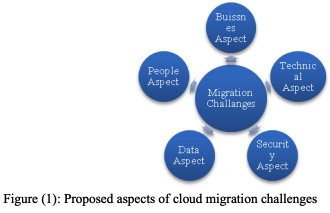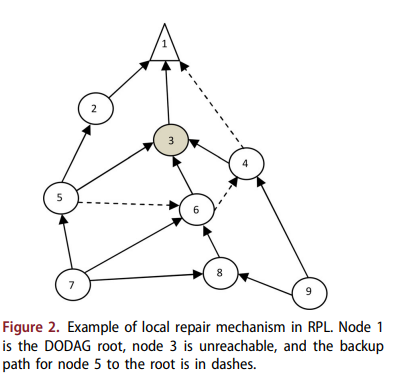Breadcrumb

Survey of Code Reuse Attacks and Comparison of Mitigation Techniques
Code-Reuse Attacks (CRAs) are solid mechanisms to bypass advanced software and hardware defenses. Due to vulnerabilities found in software which allows attackers to corrupt the memory space of the vulnerable software to modify maliciously the contents of the memory; hence controlling the software to be able to run arbitrary code. The CRAs defenses either prevents the attacker from reading program code, controlling program memory space directly or indirectly through the usage of pointers. This paper provides a thorough evaluation of the current mitigation techniques against CRAs with regards to

Supporting bioinformatics applications with hybrid multi-cloud services
Cloud computing provides a promising solution to the big data problem associated with next generation sequencing applications. The increasing number of cloud service providers, who compete in terms of performance and price, is a clear indication of a growing market with high demand. However, current cloud computing based applications in bioinformatics do not profit from this progress, because they are still limited to just one cloud service provider. In this paper, we present different use case scenarios using hybrid services and resources from multiple cloud providers for bioinformatics

A dynamic system development method for startups migrate to c loud
Cloud computing has become the most convenient environment for startups to run, build and deploy their products. Most startups work on availing platforms as a solution for problems related to education, health, traffic and others. Many of these platforms are mobile applications. With platforms as a service (PaaS), startups can provision their applications and gain access to a suite of IT infrastructure as their business needs. But, startups face many business and technical challenges to adapt rapidly to cloud computing. This paper helps startups to build a migration strategy. It discusses

Artificial intelligence for retail industry in Egypt: Challenges and opportunities
In the era of digital transformation, a mass disruption in the global industries have been detected. Big data, the Internet of Things (IoT) and Artificial Intelligence (AI) are just examples of technologies that are holding such digital disruptive power. On the other hand, retailing is a high-intensity competition and disruptive industry driving the global economy and the second largest globally in employment after the agriculture. AI has large potential to contribute to global economic activity and the biggest sector gains would be in retail. AI is the engine that is poised to drive the

Entrepreneurial ecosystems: Global practices and reflection on the egyptian context
Following the Egyptian revolution that had taken place in 2011, many social and economic norms changed. The Egyptian economy witnessed a severe deterioration. In 2016, the Egyptian pound lost almost 60% of its value overnight. Egyptian government and foreign development agencies rallied to find a remedy to the economic downturn. With no jobs, young Egyptians started experimenting with the possibility of entrepreneurship. This acted as a pretext to the massive transformations taking place in the Egyptian ecosystem. The objective of this paper is to identify how Egypt should shape its

Stock exchange threat modeling, EGX as a case study
Cyber crime is a growing threat affecting all business sectors. Stock Exchanges, a financial services sector, are not far from it. Trading stocks via Internet exposes the process to cyber threats that might take advantage of a system defect to breach security and cause possible harm. Online Trading websites are protected by various security systems. Digital Certificate, which is based on Secure Socket Layer (SSL) protocol, is an example. This research examines implementation of Digital Certificate in online trading servers. This evaluation helps to identify security weaknesses and take actions

Optimal proactive monitor placement & scheduling for IoT networks
This work is fulfilled in the context of the optimized monitoring of Internet of Things (IoT) networks. IoT networks are faulty; Things are resource-constrained in terms of energy and computational capabilities; they are also connected via lossy links. For IoT systems performing a critical mission, it is crucial to ensure connectivity, availability, and network reliability, which requires proactive network monitoring. The idea is to oversee the network state and functioning of the nodes and links; to ensure the early detection of faults and decrease node-unreachability times. It is imperative
In silico identification of potential key regulatory factors in smoking-induced lung cancer
Background: Lung cancer is a leading cause of cancer-related death worldwide and is the most commonly diagnosed cancer. Like other cancers, it is a complex and highly heterogeneous disease involving multiple signaling pathways. Identifying potential therapeutic targets is critical for the development of effective treatment strategies. Methods: We used a systems biology approach to identify potential key regulatory factors in smoking-induced lung cancer. We first identified genes that were differentially expressed between smokers with normal lungs and those with cancerous lungs, then integrated

Labour productivity in building construction: A field study
This paper describes a field study conducted over a period of 11-months on labour productivity observed during the construction of a new university campus in Cairo, Egypt. The campus is being built on 127 acres and the field study was conducted during the construction of two main buildings; each of 20,000 m 2 built up area. The study utilized work sampling (WS), craftsman questionnaire (CQ), and foreman delay survey (FDS) methods to analyze labour productivity of three indicative and labour-intensive trades, namely formwork, masonry work, and HVAC duct installation. The results were also

Guidelines for selecting emerging technology features for cloud erp
Emerging technologies such as Artificial Intelligence (AI), Blockchain and Internet of Things (IoT) permeate every aspect of work and life. For example, in the supply chain management: IoT-networked sensors can provide real-time insight into the provenance of goods and materials, supplier performance, available capacity, predictive demand and other key data. In turn, this data can feed autonomous and intelligent processes that “learn” how to respond to changing circumstances. Classical ERP systems do not support this distributed innovation. Emerging Technologies in Cloud ERP are what brings
Pagination
- Previous page ‹‹
- Page 6
- Next page ››
